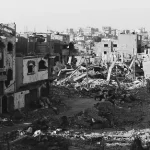According to United Nations, violence against women is a consequence of discrimination against women, in law and also in practice, and of persisting inequalities between men and women. Violence against women is a human rights violation which impacts on, and impedes, progress in many areas, including poverty eradication, peace and security. Furthermore, it leads to long-term physical, sexual, and mental consequences affecting women’s general well being in the society. Violence against women continues to be a global pandemic. However, it is wrong to think that violence against women is inevitable. Unfortunately in Kashmir, like many other places, issues like violence against women are only taken up on set dates only, usually when these days are observed especially on the occasion of Women’s Day. Very few concerned people raise the issues on any other occasions, and those who do they are looked upon as some activists promoting activities of a society or a non-governmental organization. The approach and the level of seriousness shown by the people suffer from some major defects. It is fact that over the years, crime against women has been on rise in Jammu and Kashmir. Domestic violence has been silently making inroads in the society. Common perception is that very less number of cases is reported and often the victim tends to bear for fear of societal repercussions. Therefore, it is viewed primarily as a social problem and it is only in extreme cases, like serious injuries and deaths, that the crime gets noticed. In many cases it is too late by then, and except condemnations, investigations and trials – there is nothing left to be done. One of the most unfortunate things – the social welfare department is more or less invisible. Many experts are of the opinion that it has been rendered defunct and its functioning is centered on a handful of issues only. While the social welfare department has not shown any growth or maturity in past several years, there does not seem to be any institution that would take the cases earlier. The police is often the last resort, and its arrival is usually on the crime scene. Law enforcement agencies and judiciary can play a pivotal role in curbing crimes against women. Also, government, civil society organizations and educational institutions need to find more effective ways to prevent violence and discrimination against women and must come up with concrete solutions.





